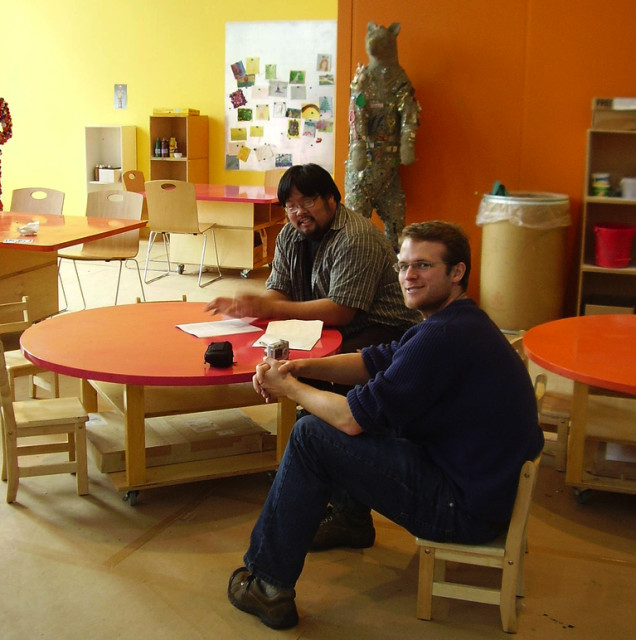Three key kinds of learning at events—Part 2

Pedagogy and Andragogy
In the 2014 post Meetings are a mess—and how they got that way I explained how we typically extend into adulthood the pedagogy we’re all exposed to as kids. The word pedagogy comes from the Greek paid, meaning “child” and ago meaning “lead”. So pedagogy literally means “to lead the child.”
The much less familiar term andragogy, first coined in the 1830s, has had multiple definitions over the years, but its modern meaning was shaped by Malcolm Knowles in his 1980 book The Modern Practice of Adult Education: From Pedagogy to Andragogy, based on the Greek word aner with the stem andra meaning “man, not boy” (i.e. adult), and agogus meaning “leader of.” Knowles defined the term as “the art and science of adult learning” and argued that we need to take into account differences between child and adult learners. Specifically, he posited the following changes as individuals mature:
- Personality moves from dependent to self-directed.
- Learning focus moves from content acquisition to problem-solving.
- Experience provides a growing resource for their learning activity.
- Readiness to learn becomes increasingly aligned with their life roles.
- Motivation to learn is more likely to be generated internally than externally.
My journey
My professional life journey illustrates all these transformations. School force-fed me a concentrated diet of science and mathematics. Besides making a broad decision to study the sciences rather than the arts, I had very little say in what classes I took. Since then:
- My subsequent career path—elementary particle physics research, running a solar manufacturing business, teaching computer science, IT consulting, and, most recently, meeting design—displays a steady movement from doing what I was told I was able to do to what I chose to pursue for my own reasons.
- As a physicist, much of my work depended on what I learned at school, university, and academic conferences. As my experience grew, my professional work became increasingly centered on creative problem-solving for clients.
- In academia, I relied chiefly on classroom learning. Over time, my 30+ years of experience became key to my effectiveness as a meeting designer and convener.
- Discovering that I love bringing people together motivates learning what I need to know to perform my work well.
- Today, financial factors play a smaller role in determining how much I work. It’s my mission to share what I think is of value that drives my desire to continue to learn how to improve my effectiveness and scope.
Take a moment to review your own professional life. Do Knowles’s maturation concepts reflect differences in how you learned in school and now learn as an adult?
Mature active learning
Of course, just as there isn’t a clear boundary between childlike and adult behaviors, there’s no clear-cut distinction between pedagogy and andragogy. Both terms encompass motivations and contexts for learning. It’s most accurate to view them as endpoints on a spectrum of learning behaviors. Nevertheless, Knowles’s five assertions, each positing progression from passivity to action, provide critical insight into why active learning becomes an increasingly important learning modality as we mature.
Too many events still use child-based pedagogical instead of adult-centered andragogical modalities. By concentrating on the latter, we can improve the effectiveness and relevance of the learning we desire and require from our face-to-face meetings.
Photo attribution: Flickr user agent_ladybug

